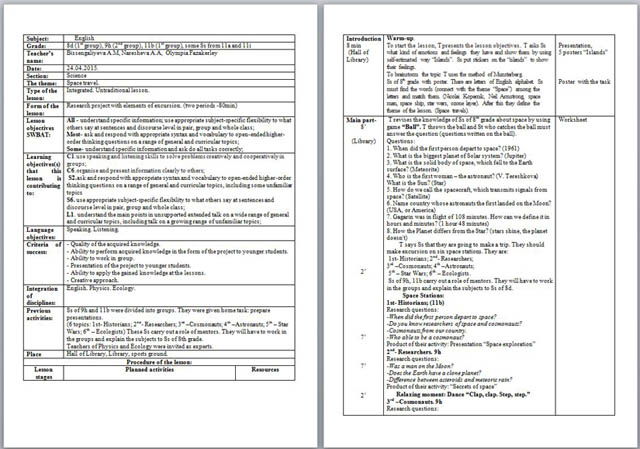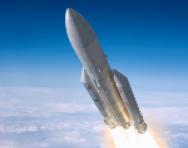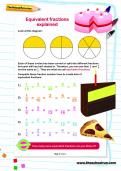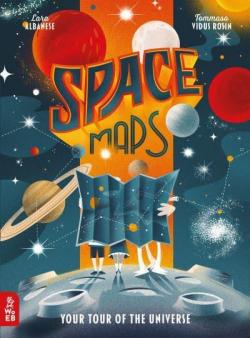1. Projects for the near future
2. How the space station is arranged
3. The example of global cooperation
4. They cannot have it in orbit
5. How it started
6. Space research to improve our life
7. Training astronauts
8. Visiting space for pleasure
A. The international space station has been in orbit for more than fifteen years. The idea was first introduced in the agreement on space exploration signed by Russia and the USA. Since then scientists and engineers from sixteen countries have contributed to the project. Thus, the station can be called the result of technology from all over the world.
B. Like Rome, the international space station was not built in a day. The space exploration project began with small manned orbital stations designed by Russian engineers in the 1960s. Later, the bigger modules Salyut and Mir appeared. They successfully worked in orbit from the 1970s till the 2000s. The space station, which is currently in orbit, was formed from Zaria and Unity, autonomous space modules, in 1998. It is regularly used for international space missions.
C. Inside the two modules there is equipment that provides astronauts with atmosphere, energy, and communications. Also, some radiators, fuel tanks and solar batteries are outside. Special screens protect all the elements of the station from meteors. The main control area is concentrated in the third, modernized module. Astronauts and all necessary goods reach the station in space ships.
D. Crews of astronauts carry out different studies and experiments in orbit. They monitor numerous space objects as well as the atmosphere, volcanoes and water resources of our planet. The results are recorded in reports that astronauts send to the Earth regularly. Science experiments are done in biology, medicine and physics. Thanks to space discoveries, scientists and engineers are able to invent new materials, medicines and technologies for people.
E. It is very important for the astronauts to have regular meals. However, their menu is very specific. All food is prepared in a special way and stored in vacuum containers. There are also foods that cannot be used in orbit at all. Bread is one of them. It is banned at the station because bread crumbs are difficult to collect. The astronauts miss bread very much and nowadays the engineers are designing a space bakery to make a special type of bread.
F. The international space station is a unique destination for space tourism. Since 2012, eight non-professional astronauts have visited it to enjoy the amazing views of the Earth. Although this type of travel costs millions of dollars, the interest to space tourism is constantly growing all over the world. Every new tourist is selected carefully because the health requirements are rather high. The journey takes ten days, including the way to and from the station.
G. At present, mass space travel to other planets is a common theme of science fiction films. Meanwhile the real space exploration scenarios are much more exciting. There are several projects for setting up stations on the Moon and to build human settlements there. A manned expedition to Mars doesn’t look like a crazy idea any more. And of course, scientists continue looking for other life in the universe.
Показать ответ
Комментарий:
A — 3 «Since then scientists and engineers from sixteen countries have contributed to the project. «
B — 5 «The space exploration project began with small manned orbital stations designed by Russian engineers in the 1960s. «
C — 2 » Inside the two modules there is equipment that provides astronauts with atmosphere, energy, and communications. Also, some radiators, fuel tanks and solar batteries are outside.»
D — 6 «Thanks to space discoveries, scientists and engineers are able to invent new materials, medicines and technologies for people.»
E — 4 «There are also foods that cannot be used in orbit at all.»
F — 8 «The international space station is a unique destination for space tourism. Since 2012, eight non-professional astronauts have visited it to enjoy the amazing views of the Earth. «
G — 1″There are several projects for setting up stations on the Moon and to build human settlements there. «
Ответ: 3526481
Нашли ошибку в задании? Выделите фрагмент и нажмите Ctrl + Enter.
Предложи свой вариант решения в комментариях 👇🏻
Lesson objectives SWBAT:
All — understand specific information; use appropriate subject-specific flexibility to what others say at sentences and discourse level in pair, group and whole class;
Most- ask and respond with appropriate syntax and vocabulary to open-ended higher-order thinking questions on a range of general and curricular topics;
Some- understand specific information and ask do all tasks correctly;
Learning objectives(s) that this lesson is contributing to:
C1. use speaking and listening skills to solve problems creatively and cooperatively in groups;
C6. organise and present information clearly to others;
S2. ask and respond with appropriate syntax and vocabulary to open-ended higher-order thinking questions on a range of general and curricular topics, including some unfamiliar topics
S6. use appropriate subject-specific flexibility to what others say at sentences and discourse level in pair, group and whole class;
L1. understand the main points in unsupported extended talk on a wide range of general and curricular topics, including talk on a growing range of unfamiliar topics;
Procedure of the lesson:
Introduction 8 min (Hall of Library)
Warm-up.
To start the lesson, T presents the lesson objectives. T asks Ss what kind of emotions and feelings they have and show them by using self-estimated way “Islands”. Ss put stickers on the “islands” to show their feelings.
To brainstorm the topic T uses the method of Munsterberg.
Ss of 8th grade with poster. There are letters of English alphabet. Ss must find the words (connect with the theme “Space”) among the letters and match them. (Nicolai Kopernik, Neil Armstrong, space man, space ship, star wars, ozone layer) . After this they define the theme of the lesson. (Space travels) .
Весь материал – смотрите документ.
- Подробности
- 19395
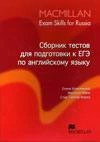 |
||
| Прочитайте текст с пропусками, обозначенными номерами. Эти номера соответствуют заданиям А21-А28, в которых представлены возможные варианты ответов. Обведите номер выбранного вами варианта ответа. TEST 18 ( part 3) |
Is there intelligent life elsewhere in the universe? One quite valid response to that question is: we just don’t know and we haven’t seen any proof that there is so A21 far (Some people’s claims that they have seen UFOs certainly do not count as proof. They are not even evidence.)
However, scientists are becoming increasingly A22 convinced that the Earth is not the only source of life in the universe.
There are two main reasons for this. The first is that the more scientists learn about how life started here on Earth, the more they realise how easily those conditions could be recreated somewhere else.
The second reason is A23 connected to the first. A24 Assuming it’s not that difficult
to create the right conditions for life to form, the universe is so big that the A25 chances are if it can happen somewhere else, it will.
None of that is to A26 say, however, that we’ll be communicating with aliens any time soon. Firstly, if there is life on other planets, it may not be intelligent in the way that humans are. There are billions of different life forms here on Earth, but it’s only humans who have been able to leave the planet. Secondly, A27 even if there was an intelligent life form on another planet, it may have evolved and become extinct billions of years before the Earth even formed. Or, it may not come into existence until billions of years in the future. Thirdly, one of the main reasons why there might be life elsewhere — the sheer size of the universe — is also a reason why we will probably never A28 get to see it. It takes so long to travel even short distances in space – the journey from Earth to our close neighbour Mars takes several months — the odds of two intelligent life forms from different planets being in the same place at the same time are incredibly small.
|
A21 |
1) long So long — разг. Пока! Счастливо! |
2) far So far — до сих пор, до настоящего момента; также, другие варианты не подходят не только по смыслу, но и грамматически |
3) much So much — так сильно |
4) many So many — так много |
|
A22 |
1) forced вынуждены |
2) influenced В такой конструкции нельзя перевести |
3) convinced убеждены |
4) supported поддержаны |
|
A23 |
1) connected Connect to — связать с чем-либо; остальные 3 слова не подходят ни грамматически, ни по смыслу: только connect в данном контексте употребляется с to |
2) joined |
3) fixed |
4) glued |
|
A24 |
1) Measuring измеряя |
2) Guessing гадая |
3) Taking беря |
4) Assuming допуская, предполагая |
|
A25 |
1) opportunities |
2) chances The chances are — шансы таковы; устоявшееся выражение |
3) possibilities |
4) choices |
|
A26 |
1) say That is to say — выражение, которое мы используем, когда в дальнейшем хотим дать детали того, о чем говорим |
2) tell |
3) speak |
4) mention |
|
A27 |
1) as As if — как если |
2) even Even if — даже если |
3) what What if — что если |
4) only Only if — нет такого сочетания, есть if only — если бы только |
|
A28 |
1) succeed |
2) achieve |
3) get Get to do smth — получить возможность что-либо сделать, смочь что-либо сделать; устоявшееся выражение |
4) make |
I. From the History of Astronautics (История космонавтики)
1. He made the first star catalogue. It is supposed that it contained a description of 42 constellations and coordinates of 850 stars. What is his name?
2. He did enough to recalculate the major components of the supposed orbits of the Sun, Moon, and planets around the Earth. Its attraction was because of its break with traditional doctrines: in particular, it opposed Aristotle, who had argued cogently for the fixity of the Earth; it provided an alternative to Ptolemy’s geocentric universe. Who was this scientist?
3. He put forward several ideas about space travel. He believed humans would eventually colonize the Milky Way Galaxy. His idea of spaceship was based on the use of liquid fuels. His calculations were used in modern theory of cosmonauts and practical space travel, who was he?
4. This man was one of the founders of the Soviet space program and was one of the lead architects behind the first human spaceflight (Vostok 1) alongside Sergey Korolyov.After Korolyov’s death in 1966, he became the lead scientist of the Soviet space program and was responsible for the launch of the first space stations from 1971 to 1991, including the Salyut and Mir series, and their precursors in 1967, the Cosmos 186 and Cosmos 188. What is the name of this man?
5. This cosmonaut went outside wearing a spacesuit connected to the capsule by a line which also carried his oxygen supply, becoming the first person to ‘walk’ in space. From the first experiments scientists went over to systematic exploration of space. He was also a talented artist. Who was this cosmonaut?
6. The longest time spent in the open space and the highest number of spacewalks. This cosmonaut during his flights into space completed 16 spacewalks of total duration of 82 hours and 22 minutes. What is the name of the cosmonaut?
7. She was the first person to use the robotic arm to retrieve a satellite, and the first woman to use the arm in space. She spent several years working at NASA headquarters where she founded NASA’s Office of Exploration. What is the name of this cosmonaut?
8. These two astronauts made the first untethered space walk in 1984. Who were they?
9.They were people who visited space as space tourists. How many space tourists were in the history of astronautics? What are their names? What is the name of the space tourist who visited space twice?
10. This museum offers a range of exhibits exploring the history of cosmonautics in the very space in which the Soviet Union first set up laboratories in the 1930s to research military rocket science. It was opened in 1973. The museum’s exhibits include rocket engines, a number of cosmonauts’ spacesuits, and even the space-dogs Belka and Strelka (taxidermied, of course) etc.
II. The Earth in the window (Земля в иллюминаторе)
1. What is the largest telescope in the world?
2. It is a place in space where gravity pulls so much that even light cannot get out. The gravity is so strong because matter has been squeezed into a tiny space. This can happen when a star is dying. What is this place?
3. We all know the names of the planets of the Solar System. Do you know what the names mean
4. The astronomers refer to it as a Sidereal Day. What is it? How long does it last?
5. As you’re probably aware, the Earth has one moon. It is really so?
III. The Earth messengers (Посланцы Земли)
1. In this silent film, a man travels to the Planet and leads a popular uprising against the authorities and attracts the love of Queen. What is the name of the film? When was it filmed?
2. It was the first living being that went to space travel. What was it?
3. This dog participated in many ground-based space experiments, but never made it into space. One of the pups was named Pushinka («Fluffy») and was presented to President John F. Kennedy’s daughter Caroline by Nikita Khrushchev in 1961. What is the name of the dog?
4. On April 11, 2008, Russian officials unveiled a monument to this dog. It died within hours after launch from overheating. A small monument in its honour was built near the military research facility in Moscow which prepared the dog’s flight to space. It features a dog standing on top of a rocket.
5. What qualities and characteristics does a cosmonaut have?
6. It was A.G. Nikolayev’s favourite song. What was its name?
7. They called them “star brothers”. One of them was A.G. Nikolayev, and the second person was… What was his name?
8. How did they call A.G. Nikolayev for lasting four days in an isolation chamber?
9. This condition is called “the effect of Nikolayev”. What does it mean?
10. This event happened on June 9, 1970. It was the first time in the history of cosmonautics. What event was it?
IV. It is interesting to know… (Интересные факты)
1. What happens if the cosmonaut falls out of the capsule in orbit, after accidentally opening the hatch?
2. How much do astronauts “grow” in space?
3. On this planet the sun rises in the west, and sets in the east? What is its name?
4. He is an armless, legless, human-shaped mannequin whose body is loaded with over 400 dosimeter sensors which collect data from galactic cosmic rays and other radiation sources in space. What is it?
5. The monument to this astronaut has one interesting feature – in the left hand of the astronaut squeezed…. What is squeezed in his hand? Who is the astronaut?
Класс: 5-8
Тема: «День
космонавтики»
Цель:
- научить
употреблять в речи лексику по теме «День космонавтики»; - развивать
память и способности к восприятию новой лексики; формирование интереса к
изучению космоса, к строению солнечной системы, к достижениям и развитию
космической индустрии и астрономии; - воспитывать
потребность в практическом использовании английского языка, любви и
уважения к достижениям отечественной науки.
Оборудование:
карточки названия команд, карточки с новыми словами, игра «Слово –
транскрипция», картинки по теме «День космонавтики», ауди, кроссворд, текст
«Биография Юрия Гагарина», шарики.
Тип урока: ознакомление
с новым материалом.
ХОД
УРОКА:
I.
Организационный момент. Сообщение темы и целей урока
1. Приветствие.
Сообщение темы и целей урока
Good
morning, dear friends! You have unusual lesson. Guess our topic. Let’s watch a
video.
Today
the theme of our lesson is «Space day».
We will speak about the history of the space day and about the first cosmonaut
Yuri Gagarin.
2.«Greeting»
(Предстартовая подготовка)
There
will be 2 space crews: 1 form “East”
and 2 form “Soуuz”.
Представление
команд, капитанов.
II.Основная
часть
1.Работа с ЛЕ
«Exam»
(Предполетный экзамен)
You must pass the exam before our trip.
“Space-Words”
Let’s
revise the words on the topic “Space”. Учитель рисует схему, ребята называют слова (ассоциации,
кот возникают у ребят со словом “Space”).
Solar system – солнечная система
space – космос
planet – планета
star –звезда
Sun – солнце
Earth – земля
satellite –спутник
Moon – луна
spaceship – космический корабль
cosmonaut – космонавт
universe –вселенная
spaceman –космонавт
-You should match the words and transcriptions.
1. Mercury a) [‘sætən]
2. Uranus b) [mɜrkjəri]
3. Venus c) [viːnəs]
4. Neptune d) [ɝθ]
5. Earth e)[‘juər(ə)nəs]
6. Mars f)[‘neptjuːn]
7. Saturn g) [ma:z]
So, you are ready to fly into space.
2.Прослушивание песни «Планеты»
— Listen song about planet.
3.Игра
“Wordsearch”
— Find these words in the big planet on
the right – they go horizontally or vertically, and some may even be backwords.
Физминутка
4.Аудирование
текста
— Take a card and repeat after me.
Vocation school – ремесленное
училище
Technical secondary school – техникум
Enter – entered – поступать
The Gold Star – звезда
Was awarded – был награжден
Was born – родился
Spent – провел
Flew into space – полетел в
космос
Flying school – летная школа
-Listen text and then answer the questions!
Yuri Gagarin is
the first cosmonaut in the world. He was born on March 9,1934 in the Smolensk
region. In 1951 he finished a vocational school in Lyubertsy. Yuri Gagarin
began to flay when he was a student of a technical secondary school. In 1955 he
entered a flying school. On April 12,1961 Yuri Gagarin flew into space for the
first time in history. He spent 108 minutes in space. When he came back in his
spaceship “Vostok” he was made a Hero of the Soviet Union and was awarded the
Gold Star medal.
-Answer the
questions.
1. Who is the first cosmonaut?
2. When did Yuri Gagarin fly into space?
3. How many minutes did he spend there?
5.Чтение текста «Биография Юрия Гагарина»
-The first Soviet cosmonaut Yuri Alexeyevich Gagarin
flew into space on that day 60 years ago. Read the story about him.
P1: Yuri Alexeyevich Gagarin was born in 1934 and died
in 1968.
He was
born in the village of Klushino in the Smolensk region. Yura was an active,
brave and curious boy. His parents, Alexey Ivanovich Gagarin and Anna
Timofeyevna Gagarina, were peasants, they worked on a collective
farm.
P2: Yuri was a good pupil.
In 1955 he entered a school for pilots. Then he became a pilot and joined the
first group of cosmonauts. In 1960 Gagarin began to prepare for the flight into
space.
P3: On April 12, 1961 Yuri
Gagarin flew into space and spent 108 minutes there. The rocket flew around the
Earth and then came back to the orbit. It was the first time in history that
the Russian spaceship Vostok -1 with the man on board was in space. Gagarin
said „Up we go!» and with these words he became the first cosmonaut.
P4: After his flight he
became famous and visited 30 countries.
P5: Gagarin became a
Hero of our country. And the 12th of April – the day when the first man flew to
space — is a holiday.
Quiz in numbers.
1. When was Gagarin born? (on the 9th of
March in 1934)
2. When did Gagarin fly into space? (on the 12th
of April in 1961)
3. How long did he fly into space? (108 minutes)
4. How many countries did he visit? (30 countries)
5. Which anniversary do we celebrate since Gagarin’s
first flight? (50th anniversary)
6. Name the number of his spaceship. (Vostok-1)
III.Итог
урока
1.Беседа
—And now let’s come back
to the earth and speak Russian again.
-Who is the first
cosmonaut?
-When did Yuri
Gagarin fly into space?
-How many minutes
did he spend there?
Есть
одна планета – сад, в этом космосе холодном.
Только
здесь леса шумят, птиц скликая перелётных.
Лишь
на ней одной цветут ландыши в траве зелёной,
И
стрекозы только тут в речку смотрят удивлённо…
Береги
свою планету – ведь другой, похожей, нету!
Я.
Аким
2.Выставление
оценок
3.Д.з.
PlanetsMiniBook
— That’s all for today.
Thanks a
lot! Goodbye!
Предлагаются вопросы для обсуждения. First of all, our warming-up
activities. I want you to answer some simple questions. You read a lot of books
on this topic and so you can easily answer them.
—
Why are people so keen on space?
—
How many planets are there in the
Solar System? What are they?
—
Which are the most advanced space
countries in the world?
Разминка 2. Викторина.
Задание – Choose the right answer.
1. Who was the first astronaut?
2. Who invented the idea of space rockets?
3. Who constructed the first spaceship?
4. Who was the first man to take a walk in space?
5. Who was the first man on the Moon?
6. Who was the first woman in space?
a. K.Tsiolkovsky b.Y.Gagarin c. A.Leonov
d. S.Korolev e. V.Tereshkova g. N.Armstrong
Interesting facts:
·
The temperature of the Sun is
6000o C.
·
Mercury.
It is a strange planet, because the same side always faces
the Sun, so one half of the planet is very hot and the other is extremely
cold.
·
Venus.
It’s called
cloudy. The thick gases in its atmosphere have created a
greenhouse effect with temperature of up to 600o C during the day.
·
Jupiter.
This planet has a mysterious red spot on its surface. This
spot which moves, is many times bigger than our Earth.
·
Saturn.
It is famous for its colourful rings of and ice which go
round it.
·
Uranius
à We know very little about them. They are two
Nepture
of four giant planets.
* Pluto
— is a tiny planet, the farthest planet from the Sun.
Конкурс 6. Fill
in the correct word derived from the word in bold.
(Текст на словообразование)
Space Travel
People
who travel into space are called astronauts in English.
If they come
from Russian-speaking countries, they are also
____________
as “cosmonauts” know
Many
astronauts and cosmonauts _____________ into space fly
since space
travel began over forty years ago. People have been
to the Moon
and _________ visit the planet Mars quite soon. may
However
before Yuri Gagarin made his historic flight in 1961,
no human
__________ outside the Earth atmosphere. His flight travel
was one of
the __________moments in the history of the world. great
Two years later on 16th
June 1963 Valentina Tereshkova, also
from Russia became the _________ woman to go into space. one
She took
just over 70 hours to go round the Earth 48 times before
__________
successfully back in Russia. Valentina Tereshkova land
never
________ into space again, but she later received the United go
Nations Gold
Medal of Peace.
 |
||
| Прочитайте текст с пропусками, обозначенными номерами. Эти номера соответствуют заданиям А21-А28, в которых представлены возможные варианты ответов. Обведите номер выбранного вами варианта ответа. TEST 10 ( part 3) |
The main argument used against the space programme is that the enormous amount of money it costs I could be better spent on solving problems such as poverty and environmental damage here on Earth.
Initially, this view A21 sounds persuasive, particularly when confronted with how huge the amounts of money we are talking about actually are. Surely, the argument goes, if, instead of sending I hundreds of billions of dollars up into space for a pointless walk on the Moon or a few glossy colour photographs of Mars, we channelled the funds into A22worthwhile projects on our own planet, we could solve all the world’s problems in about as short a time as it A23takes for the space shuttle to circle the globe.
How appealing and — perhaps sadly — how untrue. The fallacy of that argument is in the idea that all of the money allotted to the space programme is wasted in space. It isn’t. None of the money goes into space at A24 all It stays right here on Earth and is fed back into the economy.
Take the astronauts and tens of thousands of other people who are involved in whatever way with the space programme. They spend their salaries — and pay tax on them — here on Earth. That tax is used by governments to do a number of important things: build hospitals and schools,
A25provide pensions, pay for the police service and, yes, fund the space programme. Take the cost of all the spacecraft, the technology inside them and the research that’s done to create that technology. All of that money goes to companies here on Earth, companies which pay tax if they A26make a profit, and pay salaries to their workers, who then pay tax to the government, which builds hospitals, etc.
Looking at it the other way round, what would happen if all the governments in the world which have a space programme A27closed their programmes down tomorrow? Would they have a lot more money to spend on other things? Only for a very short time, because along with the A28immediate savings there would be enormous costs from the increased unemployment and reduction in taxes received.
|
A21 |
1) sees видит |
2) sounds звучит |
3) views оценивает, обозревает |
4) hears слышит |
|
A22 |
1) generous великудошный, щедрый, благородный |
2) pleasant приятный |
3) worthwhile стоящий, дающий результат |
4) optimistic оптимистический |
|
A23 |
1) takes It takes (smb) *time* to do smth — сделать что-либо заняло столько-то времени (It takes me 20 minutes to get home; it takes time to adjust; It took him 4 hours to complete the task); устоявшееся выражение |
2) needs |
3) lasts |
4) spends |
|
A24 |
1) once At once — сразу же; одновременно |
2) best At best — в лучшем случае |
3) last At last — наконец |
4) all At all — совсем, полностью |
|
A25 |
1) provide Provide pension/military aid/housing — предоставлять,обеспечивать пенсией/военной помощью/ жилплощадью; в этих и похожих по смыслу случаях как правило употребляется provide |
2) donate Жаловать, жертвовать |
3) contribute Вносить вклад;содействовать;делать пожертвования |
4) sponsor спонсировать |
|
A26 |
1) make Make a profit — получать прибыль; устоявшееся выражение, из 4-х слов только слово make может быть использовано с profit |
2) build |
3) construct |
4) manufacture |
|
A27 |
1) finished Finish down — нет такого сочетания |
2) ended End down — нет такого сочетания |
3) turned Turn down — убавить, уменьшить; отвергнуть предложение |
4) closed Close down — закрывать, прекращать действие (предприятия, проекта, программы и т.д.) |
|
A28 |
1) urgent срочный |
2) immediate Незамедлительный, происходящий здесь и сейчас |
3) hurried Торопливый, поспешный |
4) fast быстрый |
Внеклассное мероприятие по английскому языку «Космос: шаг вперёд»
Дата проведения:
Класс: 5
ЦЕЛИ УРОКА:
Образовательный аспект
расширение общего кругозора учащихся.
Воспитательный аспект
воспитание потребности в практическом использовании английского
языка, любви и уважения к достижениям отечественной науки.
Развивающий аспект
развитие памяти и способности к восприятию изученной лексики;
формирование интереса к изучению космоса, к строению солнечной
системы, к достижениям и развитию космической индустрии и
астрономии.
Учебный аспект
формирование лексикограмматических навыков чтения, аудирования
и устной и письменной речи по изучаемой теме, расширение знаний и
представлений учащихся по теме «Space».
Задачи урока:
Практиковать языковые навыки;
Тренировать в употреблении в речи и в понимании лексики по теме
«Развитие космонавтики. Планеты Солнечной системы»;
Формировать интерес учащихся к изучению английского языка;
Воспитывать патриотическое отношение к Родине (акцентируя
внимание на заслуги советской и российской космонавтики перед
мировой наукой и техникой).
Оснащение урока ТСО;
раздаточный материал в виде карточек с названиями планет
материал для изготовления костюмов (мешки, клейкая лента, степлер,
ножницы).
ХОД УРОКА:
ВВОДНАЯ БЕСЕДА. СООБЩЕНИЕ ПЕРСПЕКТИВ УРОКА
English Teacher
Good morning, dear friends! You know, there are a lot of international space
crews on the orbital station. They communicate in English. Today we are going to
make an orbital flight and speak English. Our motto is «Space. Go forward».
Доброе утро, дорогие друзья! Вы знаете, на орбитальной станции много
международных космических экипажей. Они общаются на английском языке.
Сегодня мы собираемся совершить орбитальный полет и поговорить по
английски. Наш девиз: «Космос. Иди вперед».
ОРГАНИЗАЦИОННЫЙ МОМЕНТ
English
Teacher
«Greeting» (Предстартовая подготовка)
Представление команд, капитанов.
Презентация ИНТЕРЕСНЫЕ ФАКТЫ О ПОЛЕТЁ
ОСНОВНАЯ ЧАСТЬ
1.Quiz in numbers. По очереди задается вопрос каждой команде.
1. When was Gagarin born? (on the 9th of March in 1934)
2. When did Gagarin fly into space? (on the 12th of April in 1961)
3. How long did he fly into space? (108 minutes) 4. How many countries did he visit? (30 countries)
5. Which anniversary do we celebrate since Gagarin’s first flight? (57th
anniversary)
Какую годовщину мы отмечаем после первого полета Гагарина? (57летие)
6. Name the number of his spaceship. (Vostok1)
• What country was the first to send a man to the space? (The USSR)
• Name the cosmodrome ,the spacecraft started from.(Baikonur)
• What’s her name? It’s a woman who was the first among the women to have
flight to the space. (V.Tereshkova)
• Who made the first going out to the open space? (A. Leonov)
Cosmonaut is also a researcher. He should be clever and smart. So, let’s explore
the solar system.
Космонавт также является исследователем. Он должен быть умным и умным.
Итак, давайте исследовать солнечную систему.
2.«The Solar System» (Солнечная система)
let’s go to the Solar System and put the planets in the correct order to the Sun.
Космонавт также является исследователем. Он должен быть умным и умным.
Итак, давайте исследовать солнечную систему.
Это задание выполняется участниками ( по 9 человек), где необходимо
быстрее другого экипажа расставить названия планет в том порядке, как они
движутся вокруг Солнца. Участники выстраиваются в шеренгу в том порядке,
как планеты расположены по отношению к Солнцу, держа карточки в руках.
МЕРКУРИЙ
ВЕНЕРА
ЗЕМЛЯ
МАРС ЮПИТЕР
САТУРН
УРАН
НЕПТУН
3. Кроссворд.
1. Say what scientists do to find out something new.
Скажите, что делают ученые, чтобы узнать что-то новое. R E
S E A R C H
ИССЛЕДОВАНИЕ
2. After something has happened we carry out this. I N V E S T
I G A T I O N
После того, как что-то произошло, мы это выполним.
РАССЛЕДОВАНИЕ
3. To create something for the first time. I N V E N T
Создать что-то в первый раз. Выдумывать,изобретать
4. Machines and tools than we use to do the job. equipment
Машины и инструменты, чем мы используем для выполнения
этой работы. ОБОРУДОВАНИЕ
5. A mobile phone cannot work without it. B A T T E R
Y
Мобильный телефон не может работать без него. БАТАРЕЯ
6. Without it we couldn’t turn on the lights. Electricity
Без этого мы не смогли включить свет. ЭЛЕКТРИЧЕСТВО
7. To find something which existed at home but no one knew
about it before. discover Найти то, что было дома, но об этом никто раньше не знал.
ОБНАРУЖИТЬ
4 6 7
E D
E L I
Q 1 R E S E A R C H S
U C C
2 I N V E S T I G A T I O N
P R V
M I 5 B A T T E R
Y
E C R
N 3 I N V E N T
T T Y
5. . Arrange mixed parts of the text in logical order.
Разрезанные части текста построить логически.
On the Moon.
In 1969 the first astronauts from the Earth landed on
the Moon. They had prepared for the trip for a long time
and knew that their mission involved doing things that had
never been done before.
The astronauts wore special heavy boots to prevent
them from floating off into the space.
On the moon they had time to collect Moon rocks
before returning to the Earth. It was a challenge.
Those brave people and others after them are
responsible for much of the knowledge we now have, about
how the Moon was formed.
It is likely, that scientists will continue to learn more
about how the Galaxy was formed by studying the data
back from the Moon.
Конкурс 6. Fill in the correct word derived from the word in
bold.
(Текст на словообразование)
Space Travel
People who travel into space are called astronauts in English. If they come from Russian-speaking countries, they are also
____________ as “cosmonauts”
know
Many astronauts and cosmonauts _____________ into space
fly
since space travel began over forty years ago. People have been
to the Moon and _________ visit the planet Mars quite soon.
may
However before Yuri Gagarin made his historic flight in 1961,
no human __________ outside the Earth atmosphere. His flight
travel
was one of the __________moments in the history of the world.
great
Two years later on 16th June 1963 Valentina Tereshkova, also
from Russia became the _________ woman to go into space.
one
She took just over 70 hours to go round the Earth 48 times before
__________ successfully back in Russia. Valentina Tereshkova
land
never ________ into space again, but she later received the United
go
Nations Gold Medal of Peace.
Конкурс 7 А time capsule is a container which is buried or sent into space for
future generations or aliens to find. In groups select 5 of these objects that you
would put into a time capsule to represent our civilization. Explain why you’ve
chosen these objects. (Предлагаются рисунки с изображением мобильного телефона, телескопа, пистолета, учебник истории, видеокамеры, скафандра,
видео, скейтборд, из которых следует выбрать предметы, необходимые для
заложения в капсулу времени, предназначенную для будущих поколений).
III Рефлексивнооценочный этап.
Подведение итогов конкурсов.
For thousands of years people have been dreaming of space traveling, of reaching
and touching the stars, they wrote tales, poems. Today we’ve learnt more about
space and listened to your marvelous poetic translations. And one more question
for you – If you had an opportunity to travel into space, what planet would you
choose and why?
20.06.2018
Открытое внеклассное мероприятие по английскому языку «Ко дню космонавтики»
учитель английского языка
Открытое внеклассное мероприятие по английскому языку «Ко дню космонавтики»
Оценить
2858
Содержимое разработки
Внеклассное мероприятие по английскому языку «Космос: шаг вперёд»
Дата проведения:
Класс: 5
ЦЕЛИ УРОКА:
Образовательный аспект
расширение общего кругозора учащихся.
Воспитательный аспект
воспитание потребности в практическом использовании английского языка, любви и уважения к достижениям отечественной науки.
Развивающий аспект
развитие памяти и способности к восприятию изученной лексики; формирование интереса к изучению космоса, к строению солнечной системы, к достижениям и развитию космической индустрии и астрономии.
Учебный аспект
формирование лексико-грамматических навыков чтения, аудирования и устной и письменной речи по изучаемой теме, расширение знаний и представлений учащихся по теме «Space».
Задачи урока:
Практиковать языковые навыки;
Тренировать в употреблении в речи и в понимании лексики по теме «Развитие космонавтики. Планеты Солнечной системы»;
Формировать интерес учащихся к изучению английского языка;
Воспитывать патриотическое отношение к Родине (акцентируя внимание на заслуги советской и российской космонавтики перед мировой наукой и техникой).
Оснащение урока
ТСО;
раздаточный материал в виде карточек с названиями планет
материал для изготовления костюмов (мешки, клейкая лента, степлер, ножницы).
ХОД УРОКА:
ВВОДНАЯ БЕСЕДА. СООБЩЕНИЕ ПЕРСПЕКТИВ УРОКА
English Teacher
Good morning, dear friends! You know, there are a lot of international space crews on the orbital station. They communicate in English. Today we are going to make an orbital flight and speak English. Our motto is «Space. Go forward».
Доброеутро,дорогиедрузья!Вы знаете, на орбитальной станции много международных космических экипажей. Они общаются на английском языке. Сегодня мы собираемся совершить орбитальный полет и поговорить по-английски. Наш девиз: «Космос. Иди вперед».
ОРГАНИЗАЦИОННЫЙ МОМЕНТ
EnglishTeacher
«Greeting» (Предстартовая подготовка)
Представление команд, капитанов.
Презентация ИНТЕРЕСНЫЕ ФАКТЫ О ПОЛЕТЁ
ОСНОВНАЯ ЧАСТЬ
1.Quizinnumbers. По очереди задается вопрос каждой команде.
1. When was Gagarin born? (on the 9th of March in 1934)
2. When did Gagarin fly into space? (on the 12th of April in 1961)
3. How long did he fly into space? (108 minutes)
4. How many countries did he visit? (30 countries)
5. Which anniversary do we celebrate since Gagarin’s first flight? (57th anniversary)
Какую годовщину мы отмечаем после первого полета Гагарина? (57—летие)
6. Name the number of his spaceship. (Vostok-1)
What country was the first to send a man to the space? (The USSR)
Name the cosmodrome ,the spacecraft started from.(Baikonur)
What’s her name? It’s a woman who was the first among the women to have flight to the space. (V.Tereshkova)
Who made the first going out to the open space? (A. Leonov)
Cosmonaut is also a researcher. He should be clever and smart. So, let’s explore the solar system.
Космонавт также является исследователем. Он должен быть умным и умным. Итак, давайте исследовать солнечную систему.
2.«TheSolarSystem»(Солнечная система)
let’sgototheSolarSystemandputtheplanetsinthecorrectordertotheSun. Космонавт также является исследователем. Он должен быть умным и умным. Итак, давайте исследовать солнечную систему.
Это задание выполняется участниками ( по 9 человек), где необходимо быстрее другого экипажа расставить названия планет в том порядке, как они движутся вокруг Солнца. Участники выстраиваются в шеренгу в том порядке, как планеты расположены по отношению к Солнцу, держа карточки в руках.
МЕРКУРИЙ
ВЕНЕРА
ЗЕМЛЯ
МАРС
ЮПИТЕР
САТУРН
УРАН
НЕПТУН
3.Кроссворд.
1. Say what scientists do to find out something new.
Скажите, что делают ученые, чтобы узнать что-то новое. R E S E A R C H
ИССЛЕДОВАНИЕ
2. After something has happened we carry out this.I N V E S T I G A T I O N
После того, как что-то произошло, мы это выполним. РАССЛЕДОВАНИЕ
3. To create something for the first time. I N V E N T
Создать что-то в первый раз. Выдумывать,изобретать
4. Machines and tools than we use to do the job.equipment
Машины и инструменты, чем мы используем для выполнения этой работы. ОБОРУДОВАНИЕ
5. A mobile phone cannot work without it. B A T T E R Y
Мобильный телефон не может работать без него. БАТАРЕЯ
6. Without it we couldn’t turn on the lights.Electricity
Без этого мы не смогли включить свет. ЭЛЕКТРИЧЕСТВО
7. To find something which existed at home but no one knew about it before.discover
Найти то, что было дома, но об этом никто раньше не знал. ОБНАРУЖИТЬ
46 7
E D
E L I
Q 1 R E S E A R C H S
U C C
2 I N V E S T I G A T I O N
P R V
M I 5 B A T T E R Y
E C R
N 3 I N V E N T
T T
Y
5. . Arrange mixed parts of the text in logical order.
Разрезанные части текста построить логически.
On the Moon.
In 1969 the first astronauts from the Earth landed on the Moon. They had prepared for the trip for a long time and knew that their mission involved doing things that had never been done before.
The astronauts wore special heavy boots to prevent them from floating off into the space.
On the moon they had time to collect Moon rocks before returning to the Earth. It was a challenge.
Those brave people and others after them are responsible for much of the knowledge we now have, about how the Moon was formed.
It is likely, that scientists will continue to learn more about how the Galaxy was formed by studying the data back from the Moon.
Конкурс 6. Fill in the correct word derived from the word in bold.
(Текстнасловообразование)
Space Travel
People who travel into space are called astronauts in English.
If they come from Russian-speaking countries, they are also
____________ as “cosmonauts” know
Many astronauts and cosmonauts _____________ into space fly
since space travel began over forty years ago. People have been
to the Moon and _________ visit the planet Mars quite soon. may
However before Yuri Gagarin made his historic flight in 1961,
no human __________ outside the Earth atmosphere. His flight travel
was one of the __________moments in the history of the world. great
Two years later on 16th June 1963 Valentina Tereshkova, also
from Russia became the _________ woman to go into space. one
She took just over 70 hours to go round the Earth 48 times before
__________ successfully back in Russia. Valentina Tereshkova land
never ________ into space again, but she later received the United go
Nations Gold Medal of Peace.
Конкурс 7А time capsule is a container which is buried or sent into space for future generations or aliens to find. In groups select 5 of these objects that you would put into a time capsule to represent our civilization. Explainwhyyou’vechosentheseobjects. (Предлагаются рисунки с изображением мобильного телефона, телескопа, пистолета, учебник истории, видеокамеры, скафандра, видео, скейтборд, из которых следует выбрать предметы, необходимые для заложения в капсулу времени, предназначенную для будущих поколений).
IIIРефлексивно-оценочный этап.
Подведение итогов конкурсов.
For thousands of years people have been dreaming of space traveling, of reaching and touching the stars, they wrote tales, poems. Today we’ve learnt more about space and listened to your marvelous poetic translations. And one more question for you – If you had an opportunity to travel into space, what planet would you choose and why?
Адрес публикации: https://www.prodlenka.org/metodicheskie-razrabotki/316812-otkrytoe-vneklassnoe-meroprijatie-po-anglijsk
Также вас может заинтересовать
- Открытый урок в 7 классе по теме «Защита окружающей среды» по учебнику К.Кауфман «Happy English.ru»
- Сценарий внеклассного мероприятия по литературе «Сказочной тропой» (для 4, 7 кл.)
- Патриотическое воспитание в процессе обучения математике
- Разработка урока по математике в 5 классе по теме «Задачи на проценты»
- Внеклассное мероприятие (олимпиада)

«Свидетельство участника экспертной комиссии»
Оставляйте комментарии к работам коллег и получите документ
БЕСПЛАТНО!
Раздел 2. Чтение
Прочитайте текст и выполните задания 12-18. В каждом задании выберите цифру 1, 2, 3 или 4, впишите её в соответствующее поле внизу страницы.
So far there are only two ways to get into space — you either have to be an astronaut or very rich. Countries such as Russia and the USA have space programs, but you need to be highly qualified and very determined if you want to become an astronaut. Only a few of the thousands of applicants make it through the training and selection program. Alternatively, if you have the money and are fit enough, you may be able to buy a place on the space journey, as the US millionaire, Mike Melwill did in 2004. But soon there may be another way.
Asif Mahsood is a 14-year old Pakistani with big plans. He dreams of getting a job in space, but hopes he doesn’t need to become an astronaut. And the idea is not so fantastic. Many experts believe that the travel industry will be revolutionized during the next decades by the development of space holidays.
Most people know about the space stations that are already circling the Earth. They are used for research and are operated by professional astronauts. But soon a space station could be built for commercial purposes. A holiday in space would not be cheap, but there are probably already plenty of people who would be prepared to pay.
This is where Asif’s dream comes in. He wants to be the manager of the world’s first orbiting hotel. It is likely that rocket ships will provide the transport. They could be launched from the Earth’s surface, or even from a carrier aircraft high in the atmosphere. The space hotel will be designed with a landing platform for the rocket ship. The passengers could then move into the hotel through a large tube connected to the hotel entrance. This would be necessary because there is no gravity in space. However, inside the space hotel there would need to be a system creating artificial gravity, so that guests could move around normally.
Naturally, if hotels are built in space, there will also be new jobs in space. Guests will need all the normal services found in a hotel on Earth, but there will also be some new possibilities. For example, all sorts of recreation activities could be designed to take advantage of the zero gravity conditions in space. Being able to float around a room, bounce off the walls and ceiling would be very attractive for tourists looking for a new experience. Games of three-dimensional football, basketball or volleyball would certainly be very interesting. The hotel would also have telescopes to look out at the universe, and to look back at the Earth below.
A space hotel will need to have other facilities that are not necessary in normal hotels. It would be more like a small city in some ways, with its own hospital, communication system, police force and fire department.
In the meantime, Asif is going to keep studying hard at school so that he can find a job working in one of the big international hotels in Lahore or Karachi. He wants to qualify in hotel management and continue to study business administration. The hotels are much the same, so Asif believes that the best preparation for a job in space will be gaining plenty of experience working in Earth hotels.
The whole idea of hotels in space may sound a little like science fiction, but 30 years ago technology such as mobile video phones and the Internet seemed to be just a crazy dream, whereas today they are a normal part of everyday life, and it is hard to imagine our world without them.
12. Who is Mike Melwill?
1) The founder of a new space program.
2) An American scientist.
3) A highly-qualified astronaut.
4) A man who paid for a space travel.
13. Asif’s final aim is to
1) become an astronaut.
2) go on a space holiday.
3) be a hotel manager in Pakistan.
4) work in a new type of a hotel.
14. What will be new in the operations of space stations in the future?
1) Scientific research will be performed on them.
2) They will be used for training professional astronauts.
3) They will be used for making money.
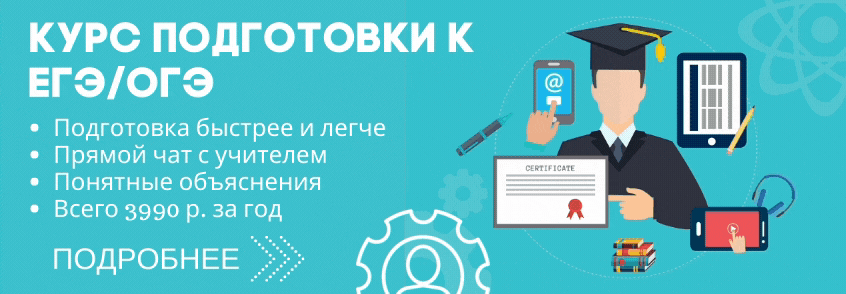
4) They will be less expensive.
15. In space hotels, a large tube will be necessary for
1) creating artificial gravity.
2) connecting the hotel to the landing area.
3) linking hotels with the Earth.
4) launching the rocket ships.
16. Which of the following is NOT described as possible entertainment in space hotels?
1) Walks in the open space.
2) Jumping on the ceiling.
3) Watching the Earth through a telescope.
4) Playing extra dimensional volley-ball.
17. Space hotels will require
1) exactly the same services and facilities as normal hotels.
2) absolutely different services and facilities than normal hotels.
3) more services and facilities than normal hotels.
4) less services and facilities than normal hotels.
18. The author argues that
1) many things that used to be science fiction exist nowadays.
2) rich people should finance the space exploration.
3) space hotels are just a crazy dream.
4) it’s already hard to imagine our world without space travelling.
What is space exploration?
Space exploration is sending people or machines into space to visit other planets and objects in space. Mankind has dreamed of visiting the stars for hundreds of years, but it wasn’t until 1969 that the first person walked on the Moon.
Since the first person walked on the Moon, hundreds of satellites have been launched into orbit around the earth, and hundreds of people have been into space on lots of different types of spacecraft. We have also sent machines to investigate objects that are further away in the Solar System.
Top 10 facts
- The first person in space was Yuri Gagarin from the Soviet Union, who travelled into orbit around the Earth in 1961.
- The first man to walk on the Moon was an American called Neil Armstrong in 1969.
- The Moon is the only place in space apart from Earth that humans have set foot on.
- People who fly into space are called astronauts. They have to be very careful about what they eat and what exercise they do to stay healthy while they are in space.
- A spacecraft needs to travel at 11,000 miles per hour to get into orbit around the Earth.
- Spacecraft use huge rockets to carry them into space.
- The most famous type of spacecraft was the Space Shuttle. There were five Space Shuttles and one prototype – between them they flew 135 missions into space.
- Out of billions of people who live on Earth, only 535 have been into Orbit, and only 12 have ever walked on the Moon.
- The International Space Station is the biggest space station ever built. It can hold a crew of six people.
- In 2012 a machine made by NASA called ‘Curiosity’ landed on Mars to see if it could find evidence of any creatures or plants having ever lived there.
Boost Your Child’s Learning Today!
- Start your child on a tailored learning programme
- Maths & English resources delivered each week to your dashboard
- Keep your child’s learning on track
Did you know?
- Space starts 100 kilometres (62 miles) above the surface of the Earth.
- The first man to walk on the moon was Neil Armstrong. He was an American who travelled there in 1969 on NASA’s Apollo 11 mission. As he stepped onto the Moon he said, “That’s one small step for man, one giant leap for mankind.”
- A satellite is what we call a machine that is launched into orbit around the Earth. Some satellites do things like taking photographs or broadcasting TV channels, and others are used by scientists.
- The first satellite was called Sputnik I and was launched by the Soviet Union in 1957. It circled the Earth for three months.
- When a space mission includes people, we call it a manned space expedition. When it only includes machines, we call it an unmanned expedition.
- Nobody has ever stepped on any object in space apart from the Moon, but we have sent machines to investigate Mars, Jupiter, Saturn and many other places.
- There is no air in space, so astronauts have to take air with them from Earth so that they can breathe. If they want to go outside their spacecraft, they have to wear special airtight clothes called a space suit.
- A space station is a place built in space so that astronauts can live and work in space.
- There is so little gravity in orbit around the Earth that instead of walking on the ground, astronauts in the space shuttles or on the International Space Station float in the air. This is called weightlessness.
- Astronauts have to exercise every day to keep their muscles strong while they are in space. They also have to eat specially prepared foods that are nutritious, easy to prepare and don’t make a mess when you eat them in space. Ice cream is too messy to eat in space so astronauts have to have it freeze-dried so that they can eat it for dessert!
Space gallery:
- An astronaut
- The Apollo 11 Moon landing
- The Soyuz space shuttle
- Buzz Aldrin walking on the Moon
- The launch of the Atlantis
- Neil Armstrong
- Helen Sharman was the first British astronaut
- Yuri Gargarin
- The Sputnik satellite
- The International Space Station, taken from the Shuttle
Gallery
About
Construction of the International Space Station by Europe, Japan, Canada, Russia and the USA started in 1998 and is still going on today. The International Space Station is the largest object that humans have ever put into orbit. It will be used by astronauts until at least the year 2020.
Space exploration doesn’t just mean sending people into space. We also send machines. Voyager I and Voyager II, launched in 1977, have almost reached the edge of the Solar System and will soon be exploring deep space. They have travelled further from Earth than any other space craft made by man.
Voyager I and Voyager II visited Jupiter, Saturn, Uranus, Neptune and Pluto on their journey through the Solar System.
Apart from the Moon, the most popular place to send unmanned space expeditions is to Mars. Since the year 2000, there have been 10 unmanned expeditions to Mars, including putting spacecraft into orbit around Mars and landing machines called rovers to explore the surface.
Some scientists think that creatures may have lived on Mars millions of years ago, when Mars was warmer and had more air – NASA sent the rover Curiosity to Mars in 2012 to look for evidence of life. They haven’t found it yet, but they are going to keep on looking!
Sending people to investigate Mars might take up to six months just to travel there. Even simple things like making sure that you have enough food to eat are difficult when you have to pack everything into your spacecraft before you leave. You can’t come back if you’ve forgotten something!
During the 1950s and 1960s there was a “Space Race” between the United States of America and the Soviet Union. Both countries thought it was important to be the first to do things in space and were very proud of their achievements. The Soviet Union put the first satellite and the first man into orbit, but the USA was the first to send a man to the Moon.
Now private companies are starting to fly into space too. Virgin Galactic sells tickets for a short trip into space for £130,000! Passengers won’t go high enough to go into orbit, but they will spend about six minutes in space. The whole trip will take two and a half hours from take-off to landing.
Words to know for space exploration:
Astronaut – a person who has travelled in space
Curiosity – a large rover sent to Mars by NASA to look for signs of life
ESA – the European Space Agency, which consists of all the countries in Europe working together on missions to explore space
NASA – the North American Space Agency, which is the organisation from the USA that explores and investigates space
Orbit – When something goes into orbit, it is high enough that it keeps circling the Earth, instead of falling back to the ground.
Rocket – Rockets burn a lot of fuel to get to very high speeds very quickly. You have to do this if you want to get from the surface of the Earth into orbit.
Rover – a mobile robot sent to land on another planet or moon and explore
Satellite – a machine put into orbit around the Earth, and often used for science or communications
Spacecraft – a vehicle for travelling in space or into space
Space Shuttle – Made by NASA, this is the most famous type of spacecraft to be made.
Space station – a permanent structure in space where astronauts can live and work
Spacesuit – special airtight clothes that keep an astronaut safe and warm outside their spacecraft
Sputnik – the first satellite to be put into orbit around Earth
Voyager I and Voyager II – spacecraft that were sent to explore the outer parts of the Solar System
Related Videos
Just for fun…
- Have an adventure on Mars and play games and try activities to find out about Mars exploration
- Answer questions about the scientific advancements that led to Apollo 11’s successful mission to the Moon in CBBC’s Moon Mayhem quiz
- Do you have what it takes to be an astronaut? Try some space challenges to find out!
- A spaceship craft activity to help you think about constructing a real spacecraft
- Go on a space walk by seeing space from the perspective of an astronaut in space
- Learn some space-themed songs
- Use National Centre for Earth Observation resources to think about what Earth looks like from space
- Launch a virtual spacecraft and send it into orbit
- Loads of brilliant online space games, from Mission Mastermind to Galaxy Hunter
- What would your age be on other planets?
- Learn loads about space while completing hands-on mission modules on the Destination Space UK website
- Make your own paper models of spacecrafts
Books about space exploration for kids
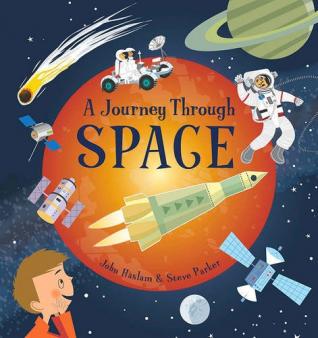
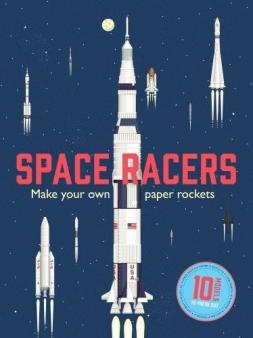
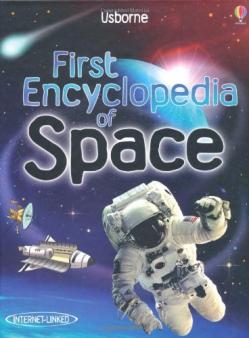
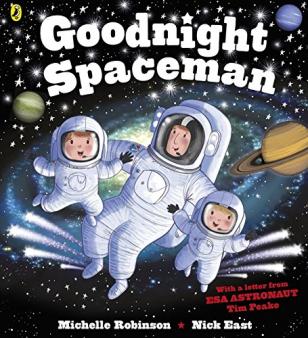
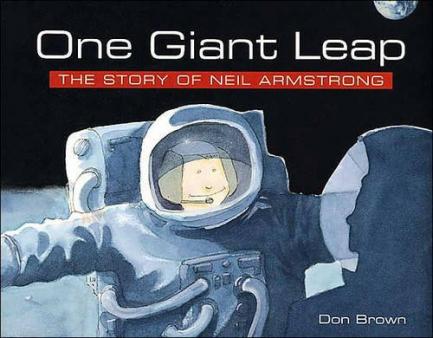
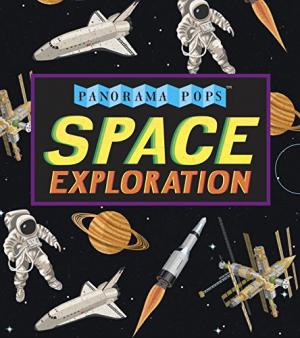
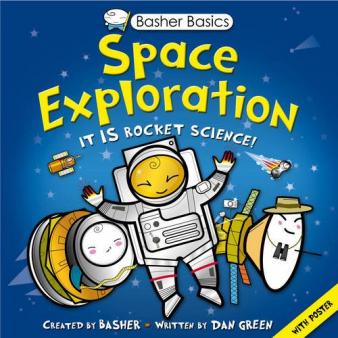
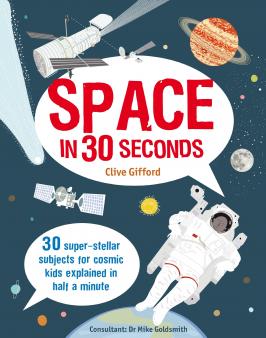
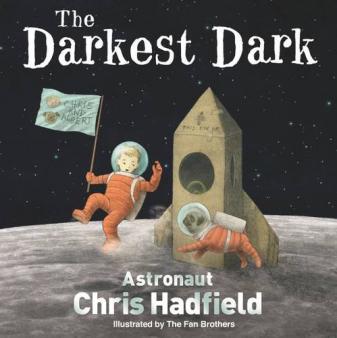
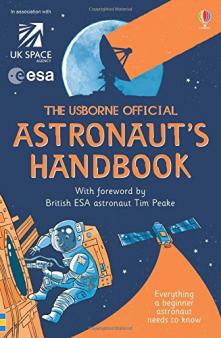


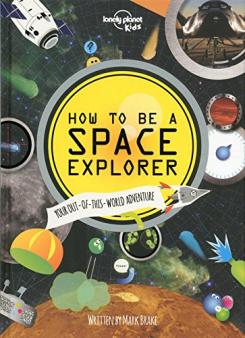
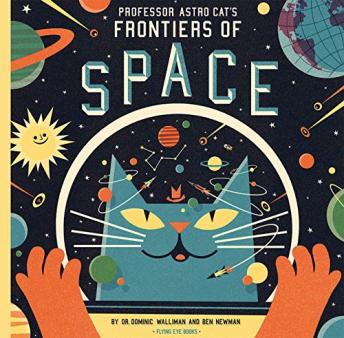
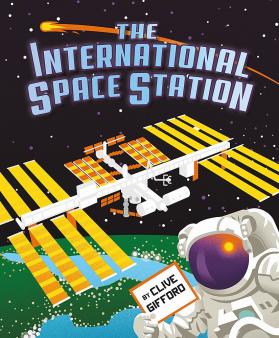
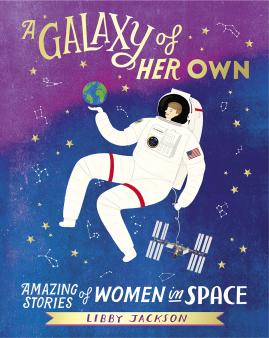
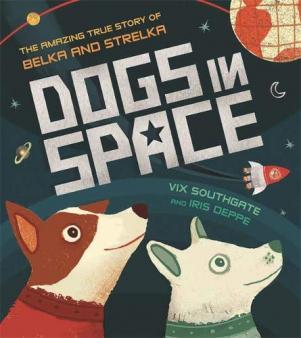
Names to know:
Buzz Aldrin (1930-2012) – He was the second man to walk on the Moon, and was from the USA.
Helen Sharman (1963-present) – She was the first person from Britain to travel into space.
John F Kennedy (1917-1963) – He was the President of the USA who started the space race and told NASA to send a man to the moon.
Neil Armstrong (1930-2012) – He was the first man to walk on the Moon, and was American.
Yuri Gagarin (1934-1968) – He was the first man to go into space, and was from the Soviet Union.
Find out more about space exploration:
- An interactive kids’ guide to the International Space Station
- Watch an animated video about Neil Armstrong
- NASA: people and technology
- Join historian Greg Jenner for a BBC Sounds kids’ homeschool history lesson on the space race
- Discover more about how NASA is searching for planets beyond our Solar System
- The European Space Agency’s kids’ zone about life beyond Earth
- The Hubble Space Telescope has changed the way scientists look at the universe
- Look through BBC Bitesize’s guide to Neil Armstrong, with an animated video and a quiz
- Marvel at the wonders of space with clips from the BBC series, Little Stargazing (suitable for KS1)
- Discover the secrets and stories of Apollo 11, the first moon mission
- Watch lots of videos from the ESA, including British astronaut Tim Peake
- Expand your knowledge with some brilliant apps about space to use on a tablet computer or phone
- Read brilliant books for KS1 and KS2 about the moon landings and space exploration
See for yourself
- Visit the amazing gallery on space travel in the Science Museum in London.
- Find out more about space and space travel at Spaceport in Liverpool.
- See more about human exploration of space at the National Space Centre in Leicester.
- Take a complete, 25-minute tour of the International Space Station with the Space Station Captain
- Might you be on one of Virgin Galactic’s first trips to space?

